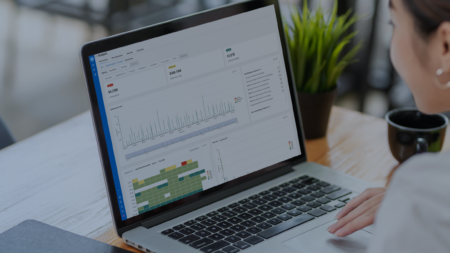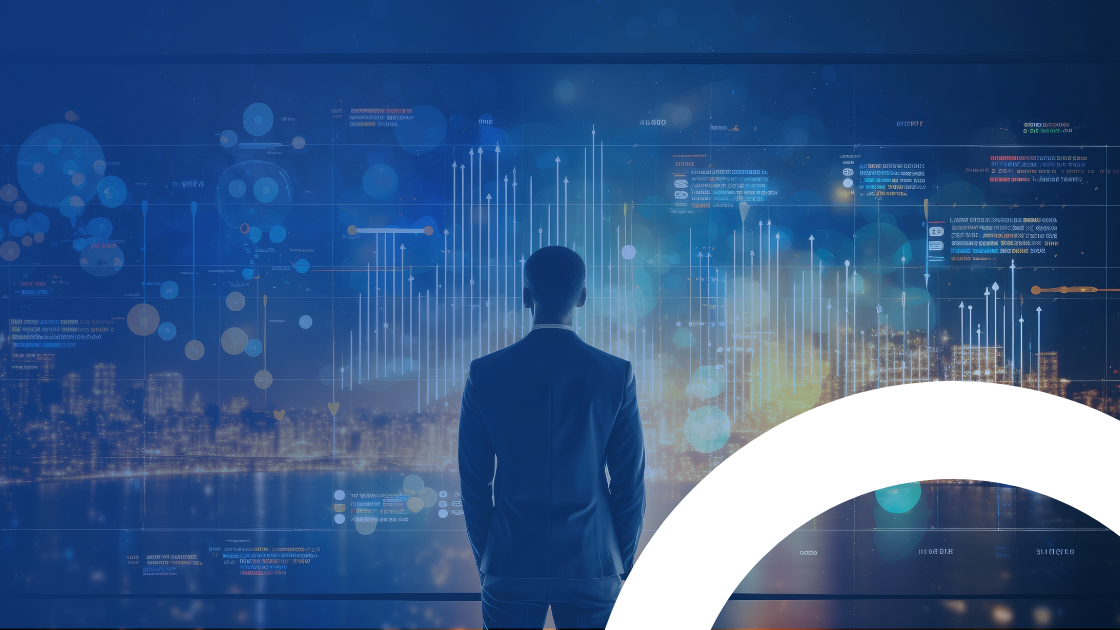Transparency and accountability are essential for businesses worldwide. While traditional audits provide these safeguards, their periodic nature often leaves gaps in risk coverage. Continuous auditing, powered by AI, offers a proactive solution, enabling real-time insights and more effective risk management. This article explores the fundamentals of continuous auditing, its use cases, benefits, challenges, and implementation strategies.
What Is Continuous Auditing?
Continuous auditing is a proactive, technology-driven process that integrates auditing into an organization’s daily operations. Unlike traditional annual audits, which provide retrospective evaluations, continuous auditing collects and analyzes data in real time. This approach ensures timely identification of risks, compliance issues, and operational inefficiencies.
By leveraging advanced technologies like AI and machine learning, continuous auditing automates tasks such as error detection and data validation. This reduces manual effort, enhances accuracy, and provides organizations with real-time insights into their financial transactions and operations.
What Are Continuous Auditing Use Cases?
Continuous auditing is a versatile tool with applications across various domains. Some of its key use cases include:
Financial monitoring
Continuous auditing helps organizations monitor financial transactions and detect anomalies or inconsistencies in real time. AI-driven audit automation reduces the likelihood of errors or fraud and ensures financial accuracy.
Compliance checks
Organizations can use continuous auditing to ensure adherence to regulatory requirements. Real-time monitoring can alert stakeholders to compliance issues before they escalate.
Fraud detection
Fraudulent activities often occur in patterns. Continuous auditing tools analyze large datasets to identify irregular patterns and flag suspicious activities, mitigating potential losses.
Operational efficiency
By integrating auditing into daily operations, businesses can identify inefficiencies and streamline processes, saving time and resources.
What Is the Objective of Continuous Auditing?
The primary objective of continuous auditing is to provide ongoing assurance and address issues promptly. Through real-time data analysis, it allows organizations to:
Identify and mitigate risks promptly
Continuous auditing ensures that potential threats and anomalies are detected early, allowing swift action to minimize financial or operational impacts.
Maintain financial and operational integrity
By constantly monitoring transactions and processes, businesses can ensure adherence to internal policies and external regulations.
Support informed decision-making processes
Real-time insights enable leaders to base their strategic decisions on accurate and up-to-date data.
Enhance transparency
Continuous auditing fosters trust among stakeholders by providing consistent, transparent reports on organizational performance.
Plus, with continuous auditing, simplifying remote auditing using AI software becomes a possibility. Remote work, despite all its benefits, comes with a unique set of challenges, requiring increased fraud detection, which can only be achieved through real-time monitoring.
What Is the Difference Between Annual Audits and Continuous Audits?
The primary difference between an annual audit and a continuous audit lies in their frequency and scope.
Annual audit
Conducted periodically, these audits provide a comprehensive review of financial statements and operational processes for a defined period. However, they rely heavily on historical data and may miss emerging risks between audit cycles.
Continuous audit
Performed in real time, continuous audits integrate monitoring into daily operations. They offer ongoing insights into transactions and processes, enabling proactive risk management and immediate action on anomalies. While annual audits are a snapshot in time, continuous audits provide a dynamic, forward-looking view.
How to Implement Continuous Auditing
Implementing continuous auditing requires careful planning and execution. You need to adopt new technologies, train employees, and get stakeholder buy-in. Here are some of the most critical steps to help you get started.
1. Technology integration
Before you can have continuous auditing, you need to select the tools you’ll be using. For that, you’ll need to evaluate your current IT infrastructure to identify gaps and ensure that the new tools are compatible with your existing system.
The right auditing tools will help you collect and analyze data in real-time. Advanced tools in this area often include AI and machine learning algorithms that not only help detect potential issues immediately but also provide a roadmap towards risk-based auditing.
2. Process changes
Next, redesign workflows to integrate auditing practices into daily operations. This may involve automating routine tasks, redefining reporting structures, and embedding audit checkpoints within key processes. By doing so, auditing becomes an inherent part of the operational fabric rather than a periodic add-on.
3. Stakeholder buy-in
Secure support from leadership and key stakeholders to ensure smooth implementation. Communicating the long-term benefits, such as risk reduction and operational transparency, is crucial. Engaging stakeholders early in the process fosters trust and minimizes resistance to change.
4. Training
Equip employees with the knowledge and skills to use continuous auditing tools effectively. This involves tailored training programs, hands-on workshops, and ongoing support to ensure users are confident in applying the technology. Encouraging feedback and addressing concerns promptly can also boost adoption rates.
What Are the Benefits of Continuous Auditing?
Continuous auditing has major benefits for companies, from improved risk management and increased efficiency to better decision-making. Understanding how AI and data can power an effective audit plan is key to maximizing these benefits and driving organizational success.
Improved risk management
Real-time insights enable organizations to identify and address risks promptly. This approach allows businesses to detect anomalies early, reducing the chances of fraud, errors, or significant financial losses. Continuous monitoring creates a safer, more predictable operational environment.
Enhanced efficiency
Streamlined processes reduce manual efforts and save time. Automation of repetitive auditing tasks frees up valuable resources, allowing you to focus on strategic activities rather than time-consuming manual checks. This translates into cost savings and improved productivity.
Better decision-making
Continuous data analysis provides a strong foundation for strategic decisions. With access to up-to-date and accurate information, you can respond quickly to market changes, regulatory requirements, or emerging opportunities, making data-driven decisions that align with organizational goals.
Competitive advantage
Businesses that adopt continuous auditing stay ahead by being proactive and transparent. They can show robust compliance and accountability to stakeholders, which enhances their reputation and trustworthiness in the market.
Enhanced compliance
Continuous auditing helps organizations stay on top of regulatory requirements by flagging non-compliance issues as they arise. This real-time oversight reduces the risk of penalties and ensures adherence to industry standards.
Scalability and flexibility
As businesses grow and their operations become more complex, continuous auditing adapts to their evolving needs. By using scalable tools and frameworks, organizations can maintain oversight even as their data volumes and operational processes expand.
What Are the Challenges of Continuous Auditing, and How Can You Avoid Them?
While continuous auditing offers significant benefits, it also comes with challenges:
Data quality issues
Inconsistent or inaccurate data can compromise audit results. MindBridge provides a dedicated data scientist team to assist with data ingestion, ensuring your data is accurate, validated, and ready for analysis.
Resistance to change
Despite your best efforts, sometimes employees may resist adopting new auditing practices. MindBridge employs certified change management professionals to create a clear roadmap and support stakeholder adoption, helping ease the transition to continuous auditing.
Integration with existing systems
Ensuring compatibility between new auditing software and existing systems can be a complex process. Thanks to MindBridge’s partnership with Azure Data Factory and robust API capabilities, integration with your existing ERP systems is seamless and efficient.
Data privacy concerns
Real-time data collection raises concerns about privacy and security. MindBridge ensures compliance with the highest industry standards, including ISO 27001, ISO 27017, ISO 27018, SOC 2, and SOC 3 certifications. Visit our security page for more details about our secure cloud infrastructure, data encryption, and privacy practices.
Cost and resource allocation
Continuous auditing requires investment in tools and resources. With MindBridge, you’ll realize significant financial benefits through revenue growth acceleration, streamlined cost efficiencies, and optimized cash inflows and outflows, delivering a measurable ROI that offsets initial costs.
Lead the Future of Auditing with AI-Powered Continuous Insights
Continuous auditing represents a transformative shift in how organizations approach risk management and operational oversight. By adopting this proactive, AI-driven approach, businesses can uncover hidden risks, ensure compliance, and enhance decision-making in real time. It’s not just about identifying problems—it’s about creating opportunities to lead confidently in today’s complex financial landscape.
With MindBridge’s decision intelligence platform, you gain unparalleled visibility into your financial operations. Backed by cutting-edge AI, seamless integration, and a commitment to security, MindBridge empowers finance leaders to detect risks, optimize processes, and unlock strategic opportunities.
Take the first step toward a smarter future. Book a demo today and see how MindBridge can help you transform your audit function, turning challenges into competitive advantages.




